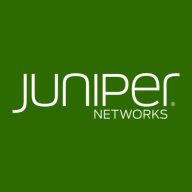

LogicMonitor and Juniper Mist Premium Analytics compete in IT infrastructure management. LogicMonitor has an advantage in pricing and support, while Juniper Mist Premium Analytics is preferred for its advanced features and comprehensive analytics.
Features: LogicMonitor offers comprehensive monitoring, real-time insights, and automated IT operations, making it suited for IT infrastructure management. Juniper Mist Premium Analytics provides AI-driven insights, advanced data analytics, and superior network performance visibility. The unique aspect of Juniper Mist is its strong AI and machine learning focus, catering to organizations seeking innovation.
Room for Improvement: LogicMonitor could enhance its AI and machine learning capabilities, provide more advanced analytics features, and focus on network performance visibility. Juniper Mist Premium Analytics may improve in offering more competitive pricing models, simplifying deployment steps for less technical users, and enhancing remote support options.
Ease of Deployment and Customer Service: LogicMonitor features straightforward deployment with reliable remote support, suitable for organizations looking for simplicity. Juniper Mist Premium Analytics provides a cloud-based deployment model and efficient AI-driven support, addressing complex environments. The primary distinction is the simplicity of LogicMonitor against the AI-driven efficiency of Juniper Mist, meeting different operational needs.
Pricing and ROI: LogicMonitor provides competitive pricing and notable ROI from reduced operational costs, appealing to budget-conscious users. Juniper Mist Premium Analytics has a higher initial setup cost but offers substantial long-term ROI due to advanced features and network analytic capabilities. The decision hinges on whether immediate cost-effectiveness or future-focused advanced analytics is prioritized.
| Product | Market Share (%) |
|---|---|
| LogicMonitor | 1.9% |
| Juniper Mist Premium Analytics | 0.5% |
| Other | 97.6% |


| Company Size | Count |
|---|---|
| Small Business | 11 |
| Midsize Enterprise | 9 |
| Large Enterprise | 8 |
Juniper Mist Premium Analytics is a comprehensive network analytics solution that provides organizations with valuable insights into their network performance and user experience. The primary use case of this product is to enable IT teams to proactively monitor, troubleshoot, and optimize their network infrastructure.
The most valuable functionality of Juniper Mist Premium Analytics is its AI-driven insights and recommendations. Leveraging machine learning algorithms, it analyzes vast amounts of network data to identify anomalies, predict potential issues, and suggest remediation actions. This proactive approach helps organizations minimize network downtime, improve user experience, and optimize network performance.
By providing real-time visibility into network performance, Juniper Mist Premium Analytics helps organizations quickly identify and resolve network issues. It offers detailed analytics on network traffic, application performance, and user behavior, allowing IT teams to pinpoint the root cause of problems and take immediate action. This not only reduces troubleshooting time but also enhances overall network reliability.
Furthermore, Juniper Mist Premium Analytics enables organizations to optimize their network infrastructure. It provides insights into network capacity utilization, application usage patterns, and user behavior, allowing IT teams to make informed decisions about network design, resource allocation, and capacity planning. This helps organizations to ensure that their network is efficiently utilized and can support the growing demands of their users.
LogicMonitor offers flexible IT monitoring with customizable dashboards and robust alerting capabilities. It integrates seamlessly with third-party apps like ServiceNow and provides a single-pane view for diverse IT environments, aiding in proactive issue resolution and enhancing operational efficiency.
LogicMonitor stands out with its capability to monitor diverse infrastructures including Cisco Voice systems, data centers, and virtual environments. Supporting servers, storage, networking devices, and applications, it provides seamless integration with cloud services like AWS and Azure. Users leverage its scalability and flexibility, benefiting from dynamic thresholds, anomaly detection, and detailed visualization. All these features contribute to improved management of IT assets and streamlined operations. Users suggest improvements in mapping, reporting, and automation for remediation, desiring more customizations and an expansive application performance monitoring toolset.
What are LogicMonitor's key features?LogicMonitor is widely implemented across industries, providing monitoring for infrastructure in sectors like telecommunications, cloud computing, and managed services. Managed service providers particularly value its ability to track client environments, deliver proactive alerts, and generate comprehensive reports, while its integration with cloud platforms like AWS and Azure offers users centralized management and visibility into IT assets worldwide.
We monitor all Network Monitoring Software reviews to prevent fraudulent reviews and keep review quality high. We do not post reviews by company employees or direct competitors. We validate each review for authenticity via cross-reference with LinkedIn, and personal follow-up with the reviewer when necessary.